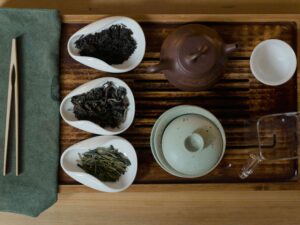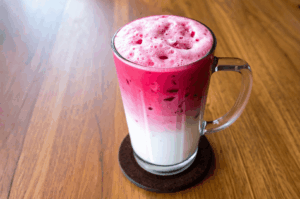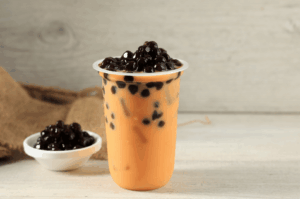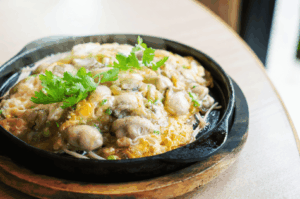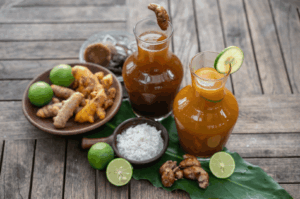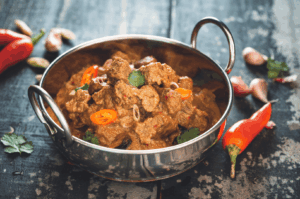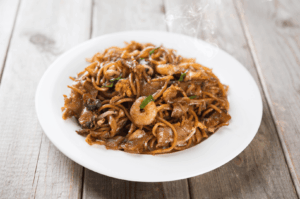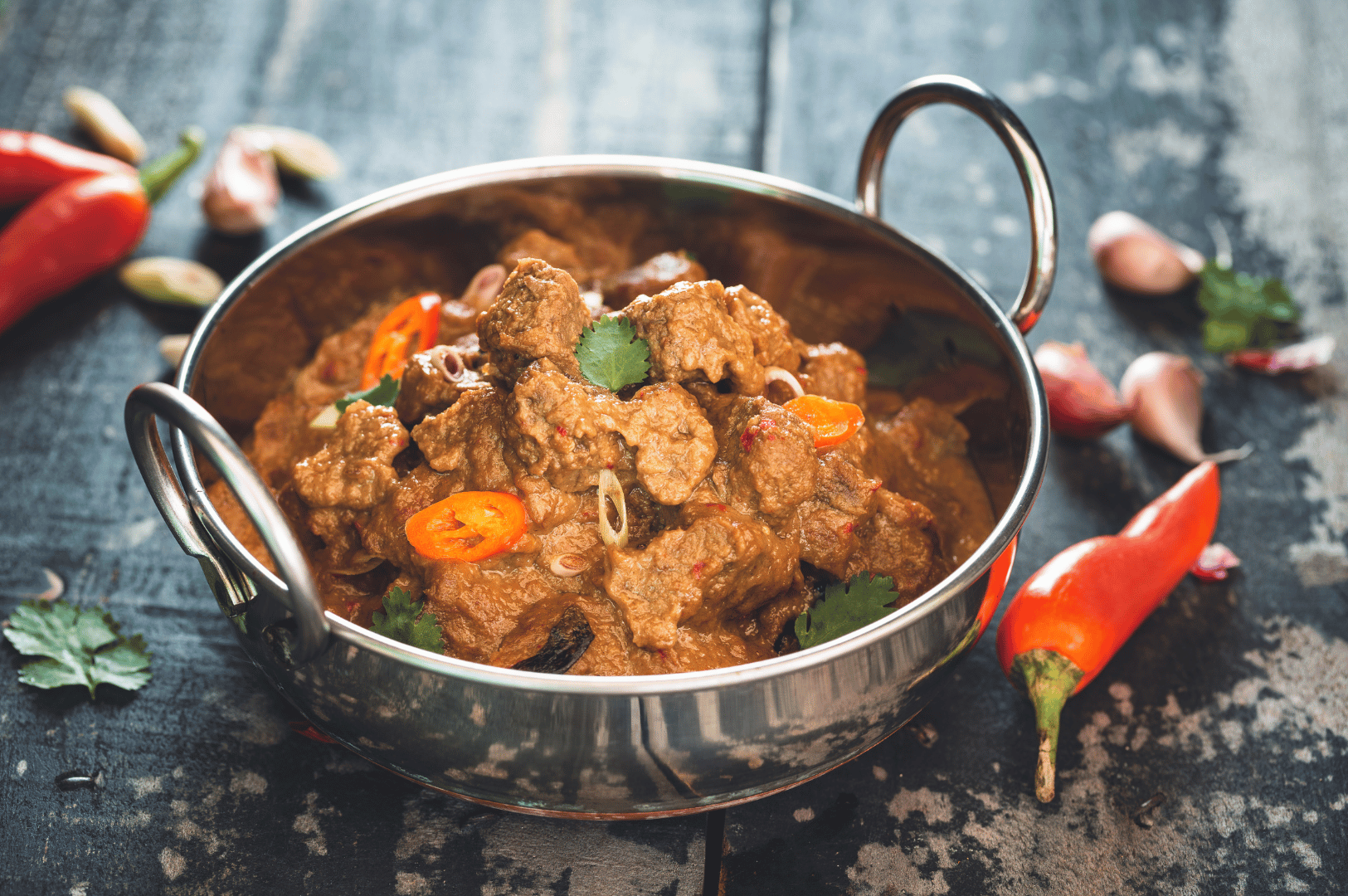
This post may contain affiliate links. For full transparency, this article may contain affiliate links.
To call Padang beef rendang simply a dish is to miss the soul of Indonesian cuisine. This legendary slow-cooked dry curry, a centerpiece of both festive tables and humble meals, has earned its fame as one of the world’s most absolutely delicious foods. Whether enjoyed with plain steamed rice or as a star offering at hari raya, beef rendang is much more than food—it’s a preserved cultural treasure, a rich tale simmered into every bite. What makes the best beef rendang? Aromatic spices, creamy coconut milk, and hours of care—these are just the start.
Let’s embark on a flavorful journey: we’ll explore beef rendang’s Minangkabau roots, unravel the science of its iconic slow cooking process, and discover how you can make this delicious dish at home. By the end, you’ll appreciate why Padang rendang stands out among rendang recipes, and perhaps be inspired to pull out your Dutch oven and make the best beef rendang yourself.
A Storied Beginning: The Origins of Padang Beef Rendang

The legacy of Padang beef rendang begins in the lush highlands of West Sumatra. This region, home to the Minangkabau people, is renowned for bold flavors and vibrant food culture. Long before refrigeration, this community mastered the art of preservation: by slow cooking beef in coconut milk, along with a powerful blend of herbs and spices, they created a dish that could last weeks—essential for travelers and traders. Cooking rendang traditionally involves a slow-cooking process that not only develops deep flavors but also preserves the beef for extended periods.
As legend and records from the late 16th century suggest, rendang was a practical method to ensure tender beef would survive long journeys over rivers and through mountains. The low, slow heat and spiced coconut milk acted as natural preservatives, warding off spoilage. Over centuries, this functional survival food evolved. By the 19th century, rendang had transformed into a celebratory meal, shared at weddings, religious holidays, and community gatherings. Today, authentic rendang is at the heart of Minangkabau feasts, signifying generosity and kinship.
From Food to Philosophy: The Cultural Significance of Rendang

In Minangkabau tradition, beef rendang is more than cuisine; it embodies the values of their society. Each ingredient tells a story. The tender beef symbolizes respected elders, coconut milk represents intellectual and spiritual leaders, chilies signify tradition and moral guidance, and the symphony of spices—star anise, cinnamon stick, cardamom pods, and more—reflects the diverse members of the community.
Preparing rendang, especially for special occasions like hari raya, often turns into a group activity. Family and friends gather to stir the pot, ensuring the beef stew slowly thickens to perfection. Patience and unity are essential, echoing the Minang philosophy that great things are achieved together and over time. It’s not only the delicious rendang that lingers—it’s the memory of shared laughter and stories.
The Four Cooking Stages of Authentic Rendang
One of the most distinctive aspects of Padang beef rendang is its four-stage transformation—a process that every authentic beef rendang recipe respects. This gradual shift is what sets Padang rendang apart and creates its legendary depth of flavor.
1. Gulai: The journey begins with beef, coconut milk, and the spice paste (bumbu or curry paste) simmered together. At this stage, the dish resembles a vibrant, soupy curry, richly yellow from turmeric and other fresh spices.
2. Kalio: As the water and coconut milk evaporate, the mixture thickens, and the oils start to surface. Kalio is a beef stew that’s saucy and slightly sweet, a must-try for those who prefer their beef rendang on the wetter side.
3. Rendang: Authentic Indonesian rendang is born in stage three. The sauce is reduced to a thick, clinging coating. The beef is fork-tender and suffused with the flavors of coriander seeds, kaffir lime leaves, lemongrass paste, and ground spices. The spiced coconut milk begins to caramelize, turning the stew deep brown.
4. Hitam (Black Rendang): If left even longer, the beef darkens further, becoming almost black. This is the stage where you achieve traditional dry beef rendang, with all the liquid evaporated and the beef coated in a dry, caramelized spice mixture. This dry curry style, or rendang hitam, is particularly prized for its intensity and for keeping well without refrigeration—an echo of its origins.
The Spice Paste: Flavor’s Beating Heart

The famous complexity of rendang lies in its spice paste. For the best beef rendang, you’ll want to gather aromatic herbs and spices—this is not the time for shortcuts! The classic spice mix (bumbu) for Padang rendang includes:
- Aromatic roots: Fresh galangal, ginger, and turmeric (or fresh turmeric, if available).
- Fragrant leaves and stalks: Lemongrass, kaffir lime leaves, turmeric leaves, and pandan are all used for their scent and flavor.
- Alliums: Shallots and garlic build the savory base.
- Heat: Chili peppers for spice; add more or less to taste.
- Warming notes: Star anise, cinnamon stick, coriander seeds, cardamom pods, and nutmeg.
- Nutty elements: Candlenuts or toasted grated coconut (kerisik or desiccated coconut) for creaminess and texture. Toasted coconut, carefully browned in a dry pan until golden and fragrant, is essential for achieving the signature flavor, aroma, and rich texture of authentic rendang.
A food processor makes breaking down the ingredients easy at home, but traditional rendang recipes rely on grinding with a stone mortar and pestle for richer oils and subtle flavors.
The Crucial Role of Slow Cooking
For authentic beef rendang, slow cooking is non-negotiable. Traditionally, cooks slow cook the beef at low heat for hours with the lid on, ensuring the meat becomes tender, caramelized, and deeply flavorful. Only low, gentle heat over several hours can achieve the transformation Padang is known for. Here’s why slow cooking matters so much:
- Tender beef: Using cuts like beef chuck or even beef short ribs, slow heat breaks down connective tissue and infuses flavor, delivering beef you can cut with a spoon.
- Deep flavor: The long simmer in coconut milk, along with fresh spices and coconut cream, allows those flavors to fully develop and mingle, especially as water or coconut milk gradually evaporates.
- Dry curry finish: As the liquid reduces, the separated oil fries the spice paste and meat gently, creating those signature caramelized, concentrated flavors that mark the best beef rendang.
- Preservation: By the end, you have not just a delicious dish, but a recipe ideal for keeping—rendang daging was, after all, created to last.
Signature Variations: More than One Rendang
While Padang beef rendang is often seen as the gold standard thanks to West Sumatra’s expertise, adventurous eaters can explore rendang’s many regional faces. Different regions and cooks make rendang with unique ingredients or techniques, such as using kerisik or varying the type of meat.
- Malaysian beef rendang: Often features kerisik (toasted grated coconut), brown sugar or palm sugar for sweetness, and remains wetter.
- Javanese Beef Rendang: Sweeter and saucier, with more coconut milk and sometimes tamarind paste for tanginess.
- Chicken Rendang (Rendang Ayam): A shorter-cooked but equally flavorful option, perfect for fans of chicken rendang recipe variations.
- Vegetarian/vegan rendang: Using jackfruit, potatoes, or tofu, these rendang recipes prove the spice paste and slow cooker technique can turn almost any centerpiece into a delicious food adventure.
- Rendang Tok: A dry curry from Perak, Malaysia, with a distinct mix of ground and whole spices, also slow cooked for rich depth.
What unites them is the backbone of creamy coconut milk, aromatic spices, and a devotion to time-honored technique.
Expert Tips for Making the Best Beef Rendang at Home
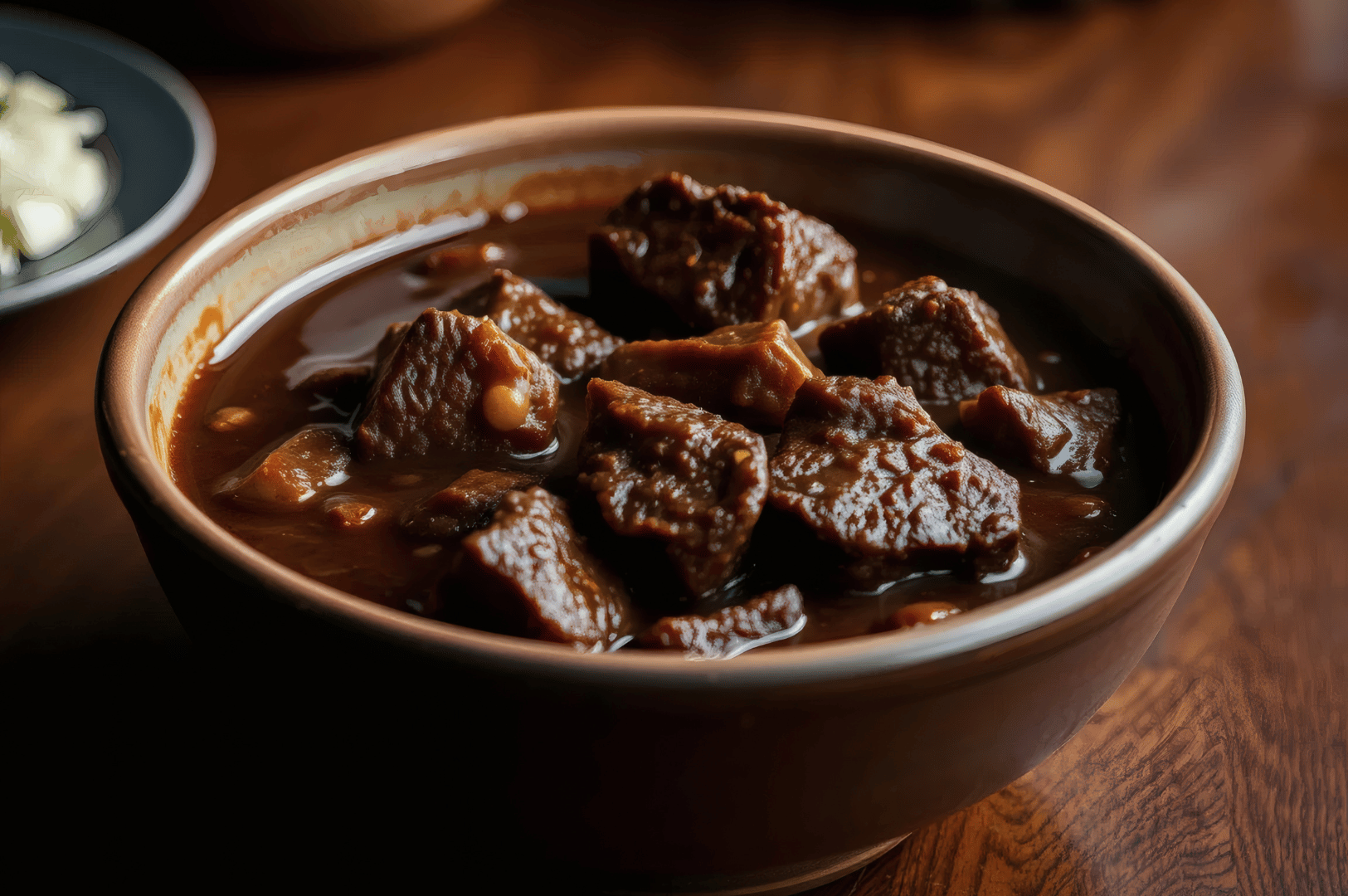
- Want to make the best beef rendang or an authentic chicken rendang? Start with the freshest whole spices and herbs, like grated coconut, lemongrass paste, and galangal.
- Beef chuck, short ribs, or cuts with some fat will yield the most tender beef.
- Sauté your rendang paste patiently until it separates—don’t rush this vital step!
- Add the coconut milk after the paste has cooked and the meat is browned, stirring it in gradually to create a rich, flavorful sauce.
- Use a Dutch oven for even heat, or a slow cooker if you want the flavors to develop with less tending.
- To thicken, toasted shredded coconut (or desiccated coconut) adds body and that unmistakable richness.
- Kaffir lime leaves, tamarind pulp or lime juice (for brightness), and turmeric leaves are worth seeking out for authentic taste.
- Always stir frequently as the curry thickens to avoid scorching. This is key in the last stages before the dry curry finish.
Simplified, Authentic Beef Rendang Recipe
Ingredients:
- 2 lbs beef chuck, cut in large cubes
- 1 can coconut cream or 2 cups fresh coconut milk
- 2 cups water or coconut milk
- 2 lemongrass stalks, bruised
- 4 kaffir lime leaves
- 1 turmeric leaf (optional, tied in a knot)
- 1 cinnamon stick
- 2 star anise
- 2 cardamom pods
- 1 tbsp tamarind pulp or paste (or lime juice or tamarind juice)
- 1 cup toasted grated coconut (kerisik or desiccated coconut)
- 1-2 tbsp brown sugar or palm sugar
- Salt, to taste
For the Spice Paste:
- 8-10 shallots
- 5 cloves garlic
- 5-8 red chili peppers (adjust to taste)
- 2-inch fresh galangal
- 2-inch fresh ginger
- 2-inch fresh turmeric (or 1.5 tsp ground)
- 4 candlenuts
Instructions:
- Blend the spice paste: Use a food processor to combine all paste ingredients until smooth.
- Sauté: In a Dutch oven over medium heat, add paste with a splash of oil; fry until aromatic and oil starts to separate (about 10 minutes).
- Add beef and aromatics: Stir in beef chunks, lemongrass, kaffir lime leaves, turmeric leaf, cinnamon stick, star anise, cardamom, and tamarind pulp, paste, or tamarind juice.
- Pour in liquids: Add coconut cream and water or coconut milk. Simmer uncovered on low heat, stirring occasionally, until meat is tender—about 2-3 hours.
- Thicken: Add toasted grated coconut and brown sugar. Continue to simmer, stirring more often, until the sauce is nearly dry and coats the beef in a rich, brown glaze.
- Serve: Serve beef rendang with plain steamed rice or glutinous rice for a deliciously traditional meal.
Optional: For rendang hitam, cook even further until very dark and dry, stirring constantly to avoid burning.
Indonesia’s Most Delicious Dish

Padang beef rendang is a celebration of Indonesia’s heritage, patience, and creativity. The combination of slow cooking, creamy coconut milk, and aromatic spices yields an authentic beef rendang recipe deserving of 5 stars. Whether you enjoy a bowl of beef stew in West Sumatra, savor a Malaysian rendang at a festival, or make authentic rendang in your own kitchen, you’re embracing a rich tradition that stretches across centuries.
Try this authentic recipe and experience for yourself why beef rendang is so closely woven into the fabric of Indonesian culture and so absolutely delicious. Don’t forget—every cook who stirs the pot, waits patiently for the flavors to deepen, and serves beef rendang with pride is part of a legacy. This delicious dish truly proves that the best food is made with love, time, and tradition.
The Art of Asian Tea Ceremony Traditions: Ancient Rituals and Cultural Values Across Asia
Dio Asahi | November 15, 2025
A cup of tea, in many parts of Asia, represents far more than a beverage-it is a conduit to ancestral tradition, intellectual pursuit, and the cultivation of mindfulness. Asian tea ceremony traditions turn the act of drinking tea into a sophisticated art form, layered with symbolism, philosophy, and socio-cultural values. Each gesture, from scooping powdered…
The Art of Slow-Cooked Curry Recipes: Time’s Magic in South Asian Cuisine
Eda Wong | November 13, 2025
Step into a South Asian kitchen, and the senses are instantly enveloped by the inviting aroma of food slowly simmering in a sturdy clay pot or heavy vessel. The allure is undeniable: in this space, slow-cooked curry recipes are a celebration of patient tradition, spices, and the richness of South Asian cuisine. Here, time and…
Bandung Drink Recipe: A Singaporean Rose Syrup Drink Tradition
Eat Drink Asia Team | November 11, 2025
Step into any night market or hawker centre in Singapore, and you’ll spot a vibrant, glowing glass filled with a cold, beautiful drink-Bandung. Known for its iconic blush-pink hue and refreshing taste, this rose syrup drink is an integral part of Singapore’s beverages scene and a cherished tradition in Southeast Asian gatherings. More than just…
The Ultimate Hainanese Chicken Rice Recipe: A Deep Dive
Eda Wong | November 8, 2025
To wander through Singapore’s bustling hawker centres on a humid evening is to experience a symphony of sights, sounds, and smells. Among the many other dishes sizzling away, one plate stands out for its elegant simplicity: Hainanese Chicken Rice. It arrives without fanfare-gleaming slices of poached chicken over fragrant rice, flanked by a trio of…
Bubble Tea Origins: How Taiwan Created a Global Beverage Phenomenon
Dio Asahi | November 6, 2025
From Taipei to New York, a single drink has captured the world’s taste buds: bubble tea. This beverage, known as pearl milk tea or boba tea, and also known as boba in many regions, is celebrated for its delightful combination of sweet, creamy tea and signature chewy tapioca pearls. What began as a novel creation…
A Food Lover’s Guide to the Taiwanese Oyster Omelet
Eat Drink Asia Team | November 4, 2025
As twilight descends upon Taipei City, a vibrant energy pulses through its streets. This is the hour of the night markets, bustling hubs of community, commerce, and some of the world’s most incredible street food. Amidst the steam from soup dumplings and the sizzle of Taiwanese fried chicken, one iconic dish reigns supreme: the Taiwanese…
Jamu: Indonesian Herbal Medicine for Modern Well-Being
Dio Asahi | November 1, 2025
Across the Indonesian archipelago, a vibrant tradition of herbal healing has flourished for centuries. This is jamu, a cornerstone of Indonesian cultural heritage and a sophisticated system of traditional herbal medicine. Far more than just a refreshing drink, jamu represents a philosophy of balance, a deep connection to nature, and a form of indigenous medicine…
Padang Beef Rendang: The Complex Process Behind Indonesia’s Most Famous Dish
Eda Wong | October 30, 2025
This post may contain affiliate links. For full transparency, this article may contain affiliate links. To call Padang beef rendang simply a dish is to miss the soul of Indonesian cuisine. This legendary slow-cooked dry curry, a centerpiece of both festive tables and humble meals, has earned its fame as one of the world’s most…
Teh Tarik Malaysia: The Art and Science Behind Iconic Pulled Tea
Eat Drink Asia Team | October 28, 2025
In Malaysia, ordering a cup of teh tarik is about so much more than just enjoying a hot drink. Teh tarik, literally translated as “pulled tea,” is Malaysia’s national beverage, famous for its sweet, creamy taste, frothy top, and the spectacular pulling technique seen in bustling mamak stalls and coffee shops across the country. A…
The Legendary Penang Char Kway Teow: A Culinary Journey
Dio Asahi | October 25, 2025
The air in Penang is thick with anticipation, carrying the sounds and smells of Malaysian street food being crafted with expert care. Your attention is captured by one of the many street vendors, a master standing before a seasoned wok glowing over an intense fire. The rhythmic clanging of metal on metal is the soundtrack…

